Napa Valley 2020: the lost vintage
Don’t look for Napa Valley 2020 vintage wines, you won’t find them. Wildfires scorched Wine Country. The vines lived but the fruit ruined.
Don’t look for Napa Valley 2020 vintage in stores or restaurants, it won’t be there. 2020 was not only a disastrous year for public health and the economy but Northern California premium wineries lost a vintage. Only a very small percentage of vineyards actually picked grapes in 2020 across the Napa and Sonoma Valleys. Countless vineyards dropped their fruit to the ground instead of picking it fearing smoke taint after massive wildfires blanketed the valleys in smoke.
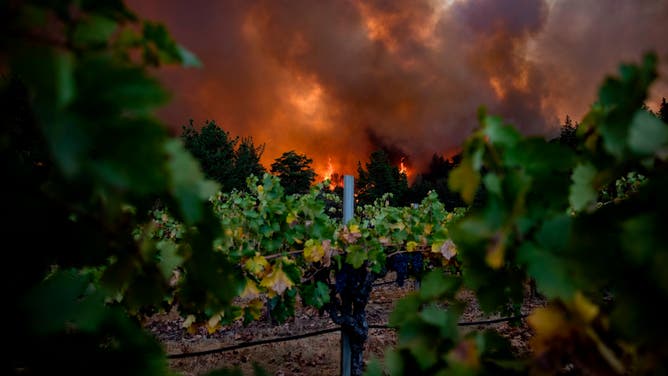
The Glass Fire in Napa County, CA
(Photo by SAMUEL CORUM/AFP via Getty Images)
Michael Baldacci, Winemaker for Baldacci Family Vinyards said, "We really didn’t make any wine at all. The timing was horrible, really tough. It was a disaster to not make wine last year, but we couldn’t take the chance on putting our label on 2020 wine." Baldacci was just one of the winemakers who did not pick their 2020 grapes and will not make 2020 vintage wines.
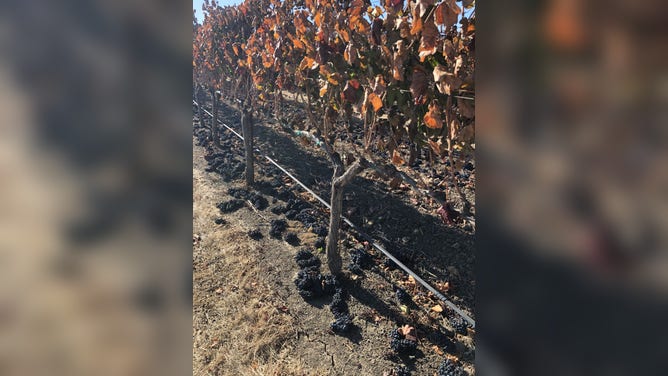
Napa, CA Pinot Noir grapes discarded in the Fall of 2020.
(FOX Weather)
Baldacci says, "Smoke taint has different ways of showing itself, it’s not always the same. It could be a smoky taste, a shorter finish, or it could mute the fruit in the wine. There is no way we could gamble with our reputation and brand quality when we don’t know if, when or how the effects of smoke taint will show up in the bottle."
Compounds in smoke enter through the leaves and are deposited in the skin. Burning wood produces free volatile phenols which the Australian Wine Research Institute says, bind to grape sugars (creating glycosides) but don’t smell smoky. "During fermentation (and also over time in barrel or bottle) these glycosides can break apart, releasing the volatile phenols into the must or wine, and allowing the smoky flavour to be perceived. These glycosides can also release the volatile phenols in the mouth during the drinking of wine, which may contribute to the perception of smoke taint."
"Labs can test for free volatile phenols but, that is just a marker, an indicator, but it’s not the full story of what you get in the wine. Every vintner was trying to get testing (before late August/September harvest) so the local lab was so overrun. I was so lucky to find a Canadian lab. Lab results just give you more information to see what is occurring in the grape" I pretty much made my decision before, but the lab results confirmed what we suspected." He did not harvest.
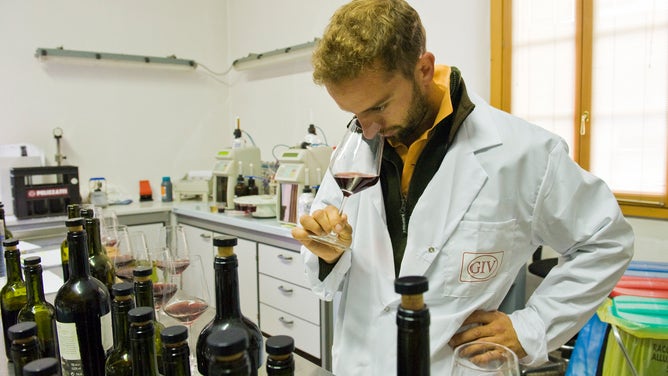
Wine analysis and testing laboratory.
(Photo by: Giovanni Mereghetti/Education Images/Universal Images Group via Getty Images / Getty Images)
I picked a little 2020 fruits; whites, Pinots and Cabs just for learning. The Pinot smells smoky. The Chardonnay was super muted, so was the Cab. That Cabernet was from the best part of the vineyard too, so I know what it could be but the 2020 fell very short of expectations."
What went wrong?
I remember waking up in the middle of the night to lightning and thunder, something so rare for Napa Valley in the Summer. Moisture from Tropical Storm Fausto a thousand miles away sparked 15,000 lightning strikes on August 16-17, 2020 across drought-stricken brush and forests in California.
The rain from the thunderstorm evaporated before it even hit the ground. This is called dry lightning and sparked fires – the California Department of Forestry and Fire Protection (CAL FIRE) reported 367 known fires burning across California after the dry lightning.
The LNU (Lake Napa CAL FIRE Unit) Lightning Complex Fire burned through Eastern Napa County. Baldacci recalls the sleepless nights, "First we had the LNU fire and smoke and that got me thinking the fruit was tainted in the beginning. I did micro-ferments and a lot of vintners shared knowledge and results from their testing. Then the Glass Fire happened and that ruined it for us. If we only had one fire maybe, but the second put decision-making over the edge."
The second fire was the Glass Fire in Northern Napa County which erupted September 27, 2020. September brought record-breaking temperatures and offshore wind events which CAL FIRE says led to the "explosive growth" of fires. Four of the state’s top 10 largest wildfires historically burned in 2020 – three of those massive fires were touched off by lightning. The 4.2 million acres blackened accounted for about 4% of the state, an area larger than Rhode Island. CAL FIRE says there were five massive lightning complex fires burning simultaneously. (A complex fire is several wildfires grouped into one fire incident geographically.)
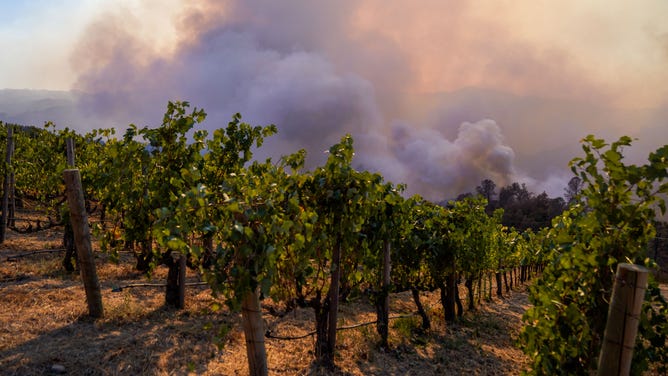
Plumes of smoke from the Glass Fire in Napa County over vineyards.
(Kent Nishimura / Los Angeles Times via Getty Images / Getty Images)
Smoke hung in the air and blanketed grapes, cars, sidewalks -- everything in soot. News outlets warned everyone not to go outside as Air Quality Index (AQI) numbers soared into the hundreds.
Cal Fire summed up the air quality in their "2020 Fire Siege" report, "Maximum fine particle levels persisted in the "hazardous" range of the Air Quality Index (AQI) for weeks in several areas of the State.
- "Altogether, more than half of California’s population experienced approximately one month characterized by "unhealthy," "very unhealthy," or "hazardous" levels of wildfire smoke during the 2020 fire season.
- The five highest average daily air pollution readings ever recorded in California occurred this year.
- The five highest average daily air pollution readings ever recorded in California occurred this year."
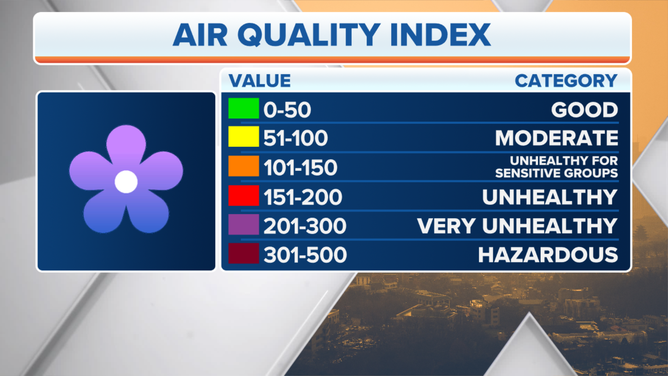
Check the FOX Weather app to find your current AQI.
(FOX Weather)
"There is just so much we don’t know about how the smoke affects the wine. It could taste fine now but what if the problem comes up in two years, five years, 20 years – we don’t want the family label at risk," Baldacci explained his tough decision. "Since we are a family winery the decision to drop the fruit was probably easier than for a big winery owned by a corporation. I had no pushback because the brand stands for quality and consistency. I was losing sleep before the decision but not picking helps me sleep at night. Yes, we have to make it through a tough couple of years with inventory, but, in the end it is so much better than to sink costs into a wine then have to recall it later."
Why didn’t the devastating 2017 fire season disrupt winemaking?
The 2017 Tubbs and Atlas Peak Fires burned similar areas to the fires of 2020 but started on October 7-8, 2017, after most harvests. They charred almost 88,000 acres and 6,424s structures.
"In 2017 we had record temperatures Labor Day weekend so that accelerated our picking schedule. We had everything but 5% of our fruit picked. It was the same for the rest of the valley." Baldacci explains why the 2017 vintage exists.
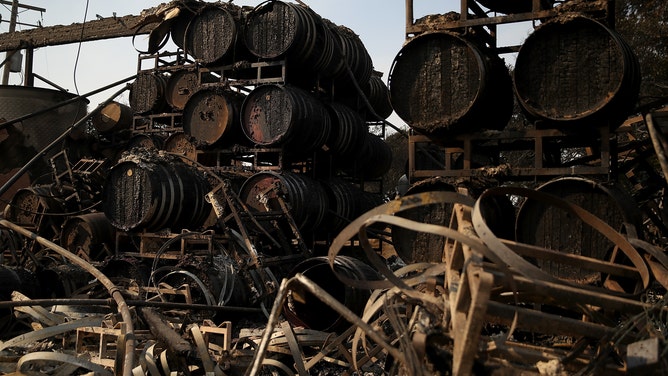
Charred wine barrels sit on racks at Paradise Ridge Winery after being destroyed by the Tubbs Fire in Santa Rosa, California.
(Photo by Justin Sullivan/Getty Images / Getty Images)
Some wines survived – other vineyards had to change their product offerings
Teaderman Vineyards already picked their Sauvignon Blanc earlier in the month. Vintner, Stan Teaderman, then made the call to pick his Cabernet. "We made the decision to do the picking based on brix (sugar level) and taste just before the fire." The major corporate winery that holds the contract for the remainder of the fruit in his vineyard (the majority of the vineyard’s Cab production) waited another 7-10 days to inspect the fruit and eventually refused it, leaving the grapes to turn to raisins on the vine.
"We did extensive third-party testing and lab analysis on the Cab and numbers fell well within parameters. So, we keep watching and testing. After crush, we press and ferment. Then the wine goes into barrels for two years. We keep monitoring, then bottle the wine and we bottle for a minimum of two years," says Teaderman.
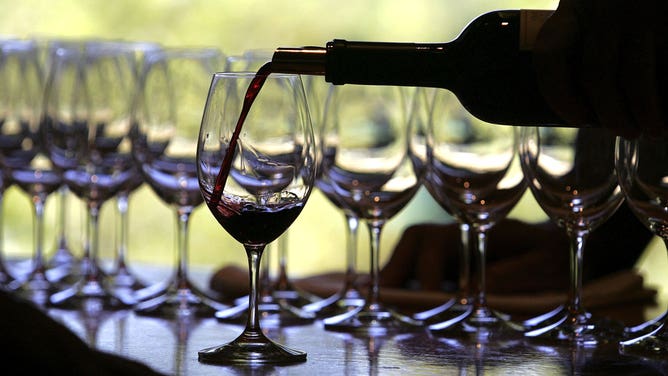
(Photo by Justin Sullivan/Getty Images / FOX Weather)
Teaderman Vineyards will be one of the few Cabernets from Napa’s Oakville AVA (American Viticultural Area) you can order in restaurants.
A spokesperson at Rombauer Vineyards says that all their famed Carneros Chardonnay was picked before the fire. Their Zinfandels from the Sierra Foothills are smoke taint free, but they did not make 2020 Napa Cabernets or Merlots.

(courtesy: Rombauer Vinyards)
The Hoopes Vineyard told Food and Wine Magazine that they are making brandy from the smoke-tainted grapes while Hanger 1 sells "Smoke Point Vodka" made from the "smoke-tinged grapes."
When asked why he didn’t experiment instead of dropping the fruit, Baldacci laughed. "We tried to go down the loss revenue route -- pick the fruit and made wine then possibly had considered it a loss or recalled it -- but that was a dead end. I also could have picked then stripped the wine down and built it back up (in the lab) then sold it on the bulk market." But, Baldacci collected crop insurance on everything not picked.
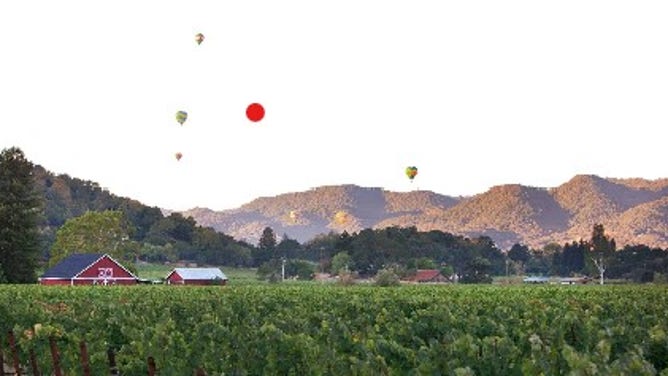
(courtesy: Baldacci Family Vineyards)
Napa wineries are still open and selling wines
"Budgeting inventory for the next two years has been tricky. Were really pinched without 2020 wines." But Baldacci says we just had to get creative like re-releasing our library wines and releasing new wines over time instead of all at once. The winery hopes to make up for their 8,500 cases of lost 2020 wines with a robust 10,000 cases in 2021.